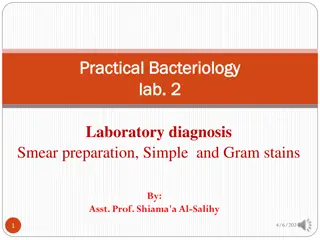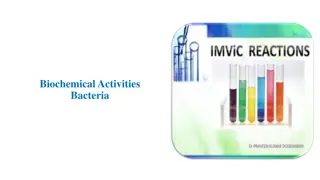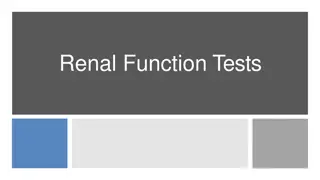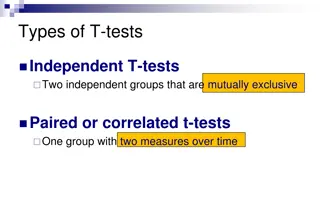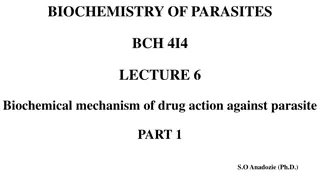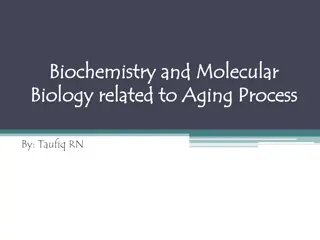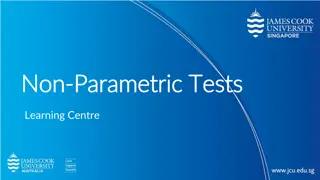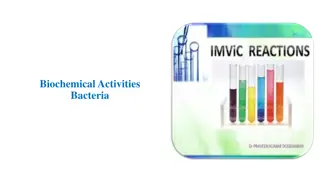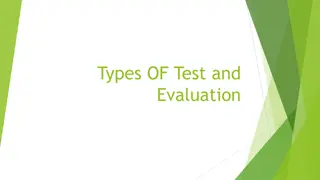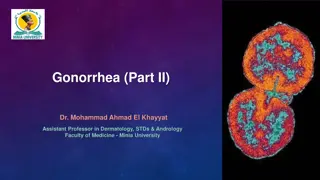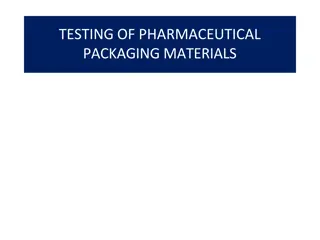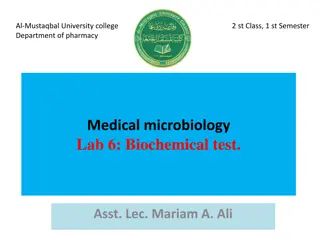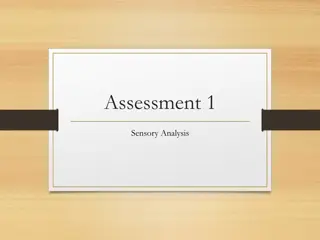Comprehensive Biochemical Tests Training Guide
Enhance your skills in conducting fasting blood glucose, post-prandial glucose, and oral glucose tolerance tests with this comprehensive training guide by Mohammed Al-Zubaidi, PhD. Master the techniques and interpretations for accurate results.
Download Presentation

Please find below an Image/Link to download the presentation.
The content on the website is provided AS IS for your information and personal use only. It may not be sold, licensed, or shared on other websites without obtaining consent from the author.If you encounter any issues during the download, it is possible that the publisher has removed the file from their server.
You are allowed to download the files provided on this website for personal or commercial use, subject to the condition that they are used lawfully. All files are the property of their respective owners.
The content on the website is provided AS IS for your information and personal use only. It may not be sold, licensed, or shared on other websites without obtaining consent from the author.
E N D
Presentation Transcript
Laboratory Training Biochemical tests: fasting blood glucose, post- prandial glucose, and oral glucose tolerance test Mohammed Al-Zubaidi, PhD
Introduction The blood glucose level is the amount of glucose present in the blood. The body naturally tightly regulates blood glucose levels as a part of metabolic homeostasis. Glucose is the primary source of energy for the body s cells. Glucose is transported from the intestines or liver to body cells via the bloodstream, and is made available for cell absorption via the hormone insulin, produced by the body primarily in the pancreas.
Introduction The mean normal blood glucose level in humans is about 100 mg/dL (5.6 mmol/L); however, this level fluctuates throughout the day. Glucose levels are usually lowest in the morning, before the first meal of the day (termed the fasting level ), and rise after meals for an hour or two by a few milligram. The normal blood glucose level (tested while fasting) for non-diabetics, should be between 70 and 110 milligrams per deciliter (mg/dL) (3.9-6.1 mmol/l).
Plasma glucose homeostasis 1. Hormonal control: The main two hormones (directly regulate blood glucose) are: Insulin Glucagon 2. The liver and other organs
Plasma glucose homeostasis Insulin AND Glucagon hormones
Plasma glucose homeostasis The liver The liver store glucose as glycogen after food intake and maintaining the blood level gluconeogenesis in the fasted state. The hepatic uptake or output of glucose is controlled via : Glucose enters the hepatocytes relatively freely compared with extrahepatic tissues. Glucose phosphorylation, in hepatocytes, is promoted by glucose kinase with a lower affinity than hexokinase in extrahepatic tissues; that is why little glucose is taken up by the liver at normal blood concentration compared to the more effective extraction by other tissues (brain); the activity of G- kinase is increased by hyperglycemia and the liver removes the glucose from the portal vein. by glycogenolysis and
Plasma glucose homeostasis The liver After uptake and phosphorylation, excess glucose is stored in the liver as glycogen (glycogenesis). The liver can convert some of excess glucose to fatty acids which are ultimately transported as triglyceride in VLDL and stored in adipose tissue. Gluconeogenesis convert the following compounds into glucose: Lactate Glycerol Carbon chains resulting from deamination of certain amino acid (mainly alanine)
Plasma glucose homeostasis The liver The liver contain glucose-6-phosphatase, which hydrolyze G6P derived from glycogenolysis gluconeogenesis, releases glucose and help maintain extracellular glucose level. Hepatic glycogenolysis hormone in response to fall in the plasma glucose. During fasting, adipose tissue will release fatty acids as a consequence of low insulin, the liver converts these fatty acids to ketones. Carbon chains of some amino acids may also converted to ketones or stimulated by glucagon
Plasma glucose homeostasis Other organs The other tissue capable of gluconeogensis is renal cortex, by converting G6P to glucose. The gluconeogenesis capacity of the kidney is important in hydrogen ion homeostasis and during prolonged fasting. Other tissues, such as muscle can store glycogen but cannot release glucose from cells because they don t contain glucose-6-phasphatase, so can only use it locally. So, glycogen in this tissue will not play any important role in maintaining the plasma glucose level.
Renal threshold for glucose Is the plasma level of glucose at which glucose first appears in the urine in more than the normal small amounts (Normally, urine contains few mg of glucose undetectable with the usual tests) Renal threshold for glucose = 180 mg/dl (10mmol/l) As blood glucose level is below this level, all glucose will be reabsorbed again & no glucose will appear in urine If blood glucose level exceeds 180 mg/dl (10mmol/l), all the excess glucose will be excreted in urine.
GLYCOSURIA In a normal person there is no sugar in the urine. If there is sugar in the urine it is a pathological condition.--- GLYCOSURIA . There are two types of glycosuria: 1. Hyperglycemic glycosuria. 2. Renal glycosuria (Renal Diabetes).
GLYCOSURIA Hyperglycemic glycosuria: if the blood glucose level goes above the renal threshold, the glucose is seen in urine. In normal person the whole glucose reabsorbed in the renal tubules. Emotional glycosuria [Transient] -- stress, pain. Endocrine glycosuria ---Diabetes Mellitus, Hyperthyroidism, Cushing s syndrome.
GLYCOSURIA Renal glycosuria: The blood sugar levels are within normal limit, less than the renal threshold [180mg/dL] but still glucose is present in urine. Types: 1. Hereditary renal glycosuria --- due to absence of Carrier protein. 2. Acquired renal glycosuria --- due to kidney problems and due to heavy metal poisoning.
Blood glucose The most frequently encountered disorder of carbohydrates metabolism is a high blood glucose due to DM. Estimates of the glucose concentration in blood are required to: Help in the diagnosis of diabetes mellitus. Management of DM patients. And monitoring of treatment in DM patients.
Fasting Blood glucose Test Description Glucose is normally formed in two ways: 1. From the metabolism of ingested carbohydrates. 2. From the conversion of glycogen to glucose in the liver. The maintenance of normal blood glucose is dependent upon proper functioning of two hormones. Glucagon causes the blood sugar to rise by speeding the breakdown of glycogen in the liver. Insulin allows glucose to pass into cells for use as energy, leading to a decrease in the blood glucose.
Fasting Blood glucose Assessment of the blood glucose allows detection of problems with glucose metabolism. Although stressful conditions such as burns or trauma can increase the blood sugar, the most common cause of abnormal glucose metabolism is diabetes mellitus. The fasting blood glucose is an excellent screening tool for diabetes.
Fasting Blood glucose Criteria for the diagnosis of diabetes mellitus, as developed by the American Diabetes Association are: 1. Symptoms of diabetes plus random plasma glucose concentration 200 mg/dL (11.1 mmol/L). Random is defined as any time of day without regard to time since last meal. The classic symptoms of diabetes include polyuria, polydipsia, and unexplained weight loss. 2. FPG 126 mg/dL (7.0 mmol/L). Fasting is defined as no caloric intake for at least 8 hours.
Fasting Blood glucose 3. 2-hour post-load glucose 200 mg/dL (11.1 mmol/L) during an oral glucose tolerance test (OGTT). The test should be performed as described by WHO, using a glucose load containing the equivalent of 75 g anhydrous glucose dissolved in water. In the absence of unequivocal hyperglycemia, these criteria should be confirmed by repeat testing on a different day. The third measure (OGTT) is not recommended for routine clinical use.
Fasting Blood glucose THE EVIDENCE FOR PRACTICE According to the American Diabetes Association: Screening to detect pre-diabetes (impaired fasting glucose [IFG] or impaired glucose tolerance [IGT]) and diabetes should be considered in individuals >45 years of age, particularly in those with a body mass index (BMI) >25 kg/m2. Screening should also be considered for people who are <45 years of age and are overweight if they have another risk factor for diabetes. Repeat testing should be carried out at 3- year intervals.
Fasting Blood glucose Screen for pre-diabetes and diabetes in high- risk, asymptomatic, undiagnosed adults and children within the health care setting. To screen for diabetes/pre-diabetes, either a fasting plasma glucose (FPG) test or 2-hour oral glucose tolerance test (OGTT) (75-g glucose load) or both are appropriate. An oral glucose tolerance test may be considered in patients with impaired fasting glucose to better define the risk of diabetes.
Fasting Blood glucose According to the U.S. Preventive Services Task Force (USPSTF) : Screening for diabetes in patients with hypertension or hyperlipidemia should be part of an integrated approach to reduce cardiovascular risk. Lower targets for blood pressure (i.e., diastolic blood pressure <80 mm Hg) are beneficial for patients with diabetes and high blood pressure. The report of the Adult Treatment Panel III of the National Cholesterol Education Program recommends lower targets for low-density lipoprotein cholesterol for patients with diabetes.
Fasting Blood glucose Normal Values Normal fasting glucose: FPG<110 mg/dL (<6.1 mmol/L) Impaired fasting glucose: FPG 110 125 mg/dL (6.1 6.9 mmol/L) Provisional diagnosis of diabetes: FPG 126 mg/dL ( 7.0 mmol/L) (diagnosis must be confirmed)
Fasting Blood glucose Interventions/Implications Pre-test Explain to the patient the purpose of the test and the need for a blood sample to be drawn. Fasting of at least 8 hours is required prior to the test. Water is permitted. Insulin or oral hypoglycemic agents are to be withheld until after the blood sample is drawn.
Fasting Blood glucose Procedure A 7-mL blood sample is drawn in a collection tube containing a glycolytic inhibitor such as sodium fluoride. Gloves are worn throughout the procedure. Post-test Apply pressure at venipuncture site. Apply dressing, periodically assessing for continued bleeding. Label the specimen and transport it to the laboratory immediately. Blood glucose levels decrease when blood is left at room temperature. Report abnormal findings to the primary care provider.
Fasting Blood glucose Clinical Alerts Patients with elevated fasting plasma glucose need to have the diagnosis confirmed with additional laboratory testing. If the patient is found to have diabetes mellitus, extensive education is needed on the condition and how to control it.
Two-hour post-prandial blood glucose The Post-prandial glucose test is a glucose test done on the blood after 2 hours from the start of your last meal. Carbohydrate foods are the main sources of glucose and it is a primary source of energy present in the body. Blood glucose levels generally increase a bit after eating a meal. It is because the pancreas releases insulin which helps the body remove glucose from the blood and store it as energy. Those suffering from diabetes will not be able to respond to the insulin and this keeps their glucose levels high. The levels remain high and over time, this can cause damage to the eyes, nerves, kidneys and blood vessels as well.
Two-hour post-prandial blood glucose In non-diabetic patients, 2-hour post-prandial blood glucose levels are usually <140 mg/dL (7.8 mmol/l). After a meal, glucose levels peak at approximately 1 hour and then return to pre- meal levels within 2 to 3 hours. This variance in plasma glucose is controlled by the insulin response to food intake. In patients with type 2 diabetes, the insulin response is decreased or absent, resulting in elevated post-prandial glucose.
Two-hour post-prandial blood glucose The post-prandial blood glucose levels depend on The meals taken Time taken by food to move through the stomach Lifestyle of the patient Sensitivity to insulin
Two-hour post-prandial blood glucose Purpose Screen for presence of diabetes Monitor the ability of the person with diabetes to manage his blood sugar levels. Monitor effects of insulin dosage in diagnosed diabetes Fasting required: beginning at midnight until breakfast Breakfast: patient consumes a prescribed meal containing 75 grams of carbohydrate o Alternative: drink 75 grams of glucose solution
Oral Glucose Tolerance Test (OGTT) What is glucose tolerance test (GTT)? Glucose Tolerance is the ability of the body to utilize glucose. GTT is indicated by the nature of blood glucose curve following the administration of glucose. Thus Glucose Tolerance is a valuable diagnostic aid. GTT can be performed by two ways . 1- Oral GTT 2- Intravenous GTT The most common glucose tolerance test is the Oral Glucose Tolerance Test (OGTT).
Oral Glucose Tolerance Test (OGTT) On standard oral glucose dose, the response of the body regarding the absorption and metabolism of glucose said to be tolerant on meeting the normal elevation and return. Whereas abnormal and improper glucose metabolism is termed glucose intolerance. This used to diagnose diseases where the glucose metabolism is impaired as in diabetes mellitus. Oral glucose tolerance test (OGTT) has been widely used as the golden standard for diagnosing diabetes mellitus in clinically doubtful cases. Lately, thought, the use of OGTT in primary care has been questioned for several reasons. It has low reproducibility and is very expensive. However, for the detection of diabetes in pregnant women, it is still recommended.
Oral Glucose Tolerance Test (OGTT) Indications 1. In patient with transient or sustained glycosuria, who have no clinical symptoms of diabetes with normal FBS &PPBG. 2. In patient with symptoms of diabetes but with no glycosuria and normal fasting blood glucose. 3. During pregnancy, excessive weight gaining is noticed, with a past history of big baby (> 4 kg ). 4. In persons with strong family history of diabetes but no overt symptoms. 5. To rule out benign renal glycosuria
Oral Glucose Tolerance Test (OGTT) Contraindications of OGTT Established or confirmed diabetic patient No role of GTT in follow up of diabetes mellitus Any conditions in which there is altered carbohydrate tolerance: endocrine disorders, myocardial infarction, post-partum, recent surgery, serious infections
Oral Glucose Tolerance Test (OGTT) Test Description Following administration of an oral glucose load, blood samples are drawn in 1/2, 1, 2, and 3 hours. For non-diabetic patients, the rise in blood glucose is relatively minor. For diabetic patients, however, the glucose level shows a dramatic increase and remains greatly elevated for several hours. This test is also used in screening for gestational diabetes during pregnancy.
Oral Glucose Tolerance Test (OGTT) According to the American Diabetes Association, the corresponding categories when the OGTT is used are the following: 2-hour post-load glucose <140 mg/dL (7.8 mmol/l) = normal glucose tolerance 2-hour post-load glucose 140 199 mg/dL (7.8 - 11 mmol/l) = impaired glucose tolerance (IGT); 2-hour post-load glucose 200 mg/dL (11.1 mmol/l) = provisional diagnosis of diabetes (the diagnosis must be confirmed).
Normal Values For 75-gram OGTT used to check for Type 2 diabetes mellitus Fasting: 70 110 mg/dL (3.9 6.1 mmol/L) 1 hour: <200 mg/dL (11.1 mmol/L) 2 hours: <140 mg/dL (7.8 mmol/L) For 50-gram OGTT used to screen for gestational diabetes 1 hour: <140 mg/dL (7.8 mmol/L) For 100-gram OGTT used to screen for gestational diabetes Fasting: <95 mg/dL (<5.3 mmol/L) 1 hour: <180 mg/dL (<10 mmol/L) 2 hours: <155 mg/dL (<8.6 mmol/L) 3 hours: <140 mg/dL (7.8 mmol/L)
Oral Glucose Tolerance Test (OGTT) Contributing Factors to Abnormal Values Bed rest, infections, smoking, and stress may alter test results. Intake of low carbohydrate diet may falsely suggest diabetes mellitus or IGT. Drugs which may increase glucose tolerance: hypoglycemic agents, insulin. Drugs which may decrease glucose tolerance: corticosteroids, estrogens, niacin, thiazide diuretics.
Oral Glucose Tolerance Test (OGTT) Interventions/Implications Pre-test Explain to the patient the purpose of the test and the need for multiple blood samples. Fasting for 8 hours is required prior to the test. Water is permitted. No alcohol or coffee intake or excessive physical activity is allowed for 8 hours prior to the test. No smoking is allowed during the testing period. If possible, drugs which may influence test results are withheld for 3 days before the test.
Oral Glucose Tolerance Test (OGTT) Procedure A 7-mL blood sample is drawn in a collection tube containing a glycolytic inhibitor such as sodium fluoride. The patient is given an oral glucose load: 75 100 g of glucose dissolved in water or lemon juice (to improve taste of very sweet substance). Ask To Drink Slowly in 5 mins Additional blood samples are drawn at 30 minutes, 1 hour, 2 hours, and 3 hours. Water is permitted and encouraged during the testing period.
Oral Glucose Tolerance Test (OGTT) The patient should rest quietly throughout the testing period. Gloves are worn throughout the procedure. Post-test The patient should be observed for weakness, tremors, anxiety, sweating, or fainting. If symptoms occur, a blood sample is drawn and tested for glucose level. For hypoglycemia (low blood sugar), administer orange juice with sugar added or IV glucose. For hyperglycemia, insulin will be administered. In either case, the test is discontinued. Apply pressure at venipuncture site. Apply dressing, periodically assessing for continued bleeding.
Oral Glucose Tolerance Test (OGTT) Label each specimen and transport to the laboratory immediately. Blood glucose levels decrease when blood is left at room temperature. The patient should eat and resume medications as before the test. Report abnormal findings to the primary care provider. Clinical Alerts Possible complication: hypoglycemia, hyperglycemia The OGTT is not typically used in children



